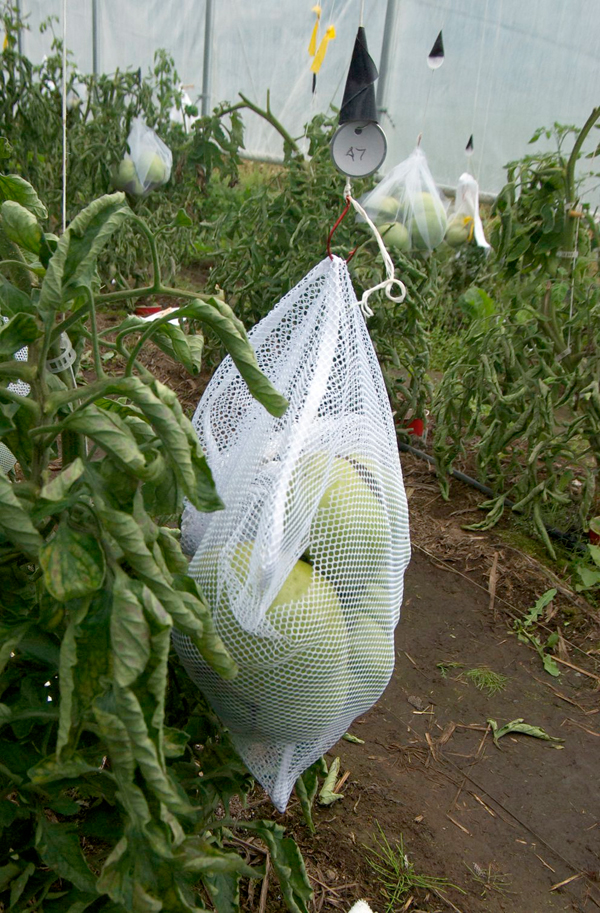
Chapter 19
When to Pick Your Tomatoes
Pick your tomatoes early if you are headed to an event. Don't wait until they have completely ripened. They should be picked when they have stopped growing as determined by the measurement of their circumference and prior to being completely ripe. If they are a red variety, they should at least be pink, but not yet red unless you are very close to the weigh-off time. This will make the tomato easier to store and transport while avoiding damage. Giant tomatoes are not things of beauty. Most are not very tasty, though some, such as Big Zac, are. Giant tomatoes are not about taste, and they are not about beauty. Giant tomatoes are about weight. It is best to pick them in the morning as they will contain more water at that time and thus be heavier. After they have been picked, tomatoes will ripen in the shade and even in the dark at proper temperatures.

Are Tomatoes like Apples?
Exerpts taken from:
New York State Agricultural Experiment Station, Geneva, NY, a Division of the New York State College of Agriculture and Life Sciences, Cornell University, Ithaca, NY.
Chemical Fruit Thinning of Apples
by C. G. Forshey,
Hudson Valley Laboratory, Highland, NY
"The objective of apple thinning is to increase fruit size. There is a strong inverse relationship between the number of fruit on an apple tree and the size of those fruit, and an increase in fruit size can reasonably be expected from a significant reduction in fruit numbers. However, fruit size at harvest is the result of the interaction of many factors. Crop load, or the number of apples on the tree, is only one of a number of contributing factors, and the effects of crop load can be modified by other factors.
"The king blossom is the strongest blossom in the apple-bloom cluster, and the one that will develop into the largest fruit, but it is also the earliest to develop – making it the most susceptible to frost injury. Bloom weather, which severely limits cross-pollination, can also adversely affect fruit size, because one of the basic requirements for large fruits is a high seed count. The immediate post-bloom weather is important, because all of the cell division in the developing fruit occurs in the 3 to 4 weeks after bloom. Warm, sunny weather favors rapid growth, but if the weather is cool and cloudy, growth will proceed slowly, and the total number of cells and the potential fruit size, will be reduced accordingly. Nutrition is a very obvious factor affecting fruit size, with deficiencies of nitrogen and potassium often associated with high percentages of small fruit. Prolonged periods of soil moisture deficits, whether due to inadequate or poorly distributed rainfall, will significantly reduce fruit size. Under these conditions, optimum fruit size may be attainable only through supplemental irrigation.
"The differences in final fruit size are indicative of differences in vigor of individual fruits during the growing season. A number of factors contribute to this variation in vigor. The vigor of the individual spur is a major factor, and differences are apparent in spur age, diameter, bud size, and the number and size of the spur leaves. The position of the fruit in the cluster is also a factor, with the king blossom, because of better vascular connections, stronger than the lateral blossoms."
[Apples and tomatoes have a lot in common.]
Cultivar vs. Variety
A cultivar is a variety strictly raised through horticultural processes, rather than by nature. Cultivars are often mistakenly referred to as varieties. A variety is a strain of plant having distinctive features which persist over successive generations in the absence of human intervention. Generally, variety applies to these naturally occurring strains, while cultivar applies to horticulturally developed strains.